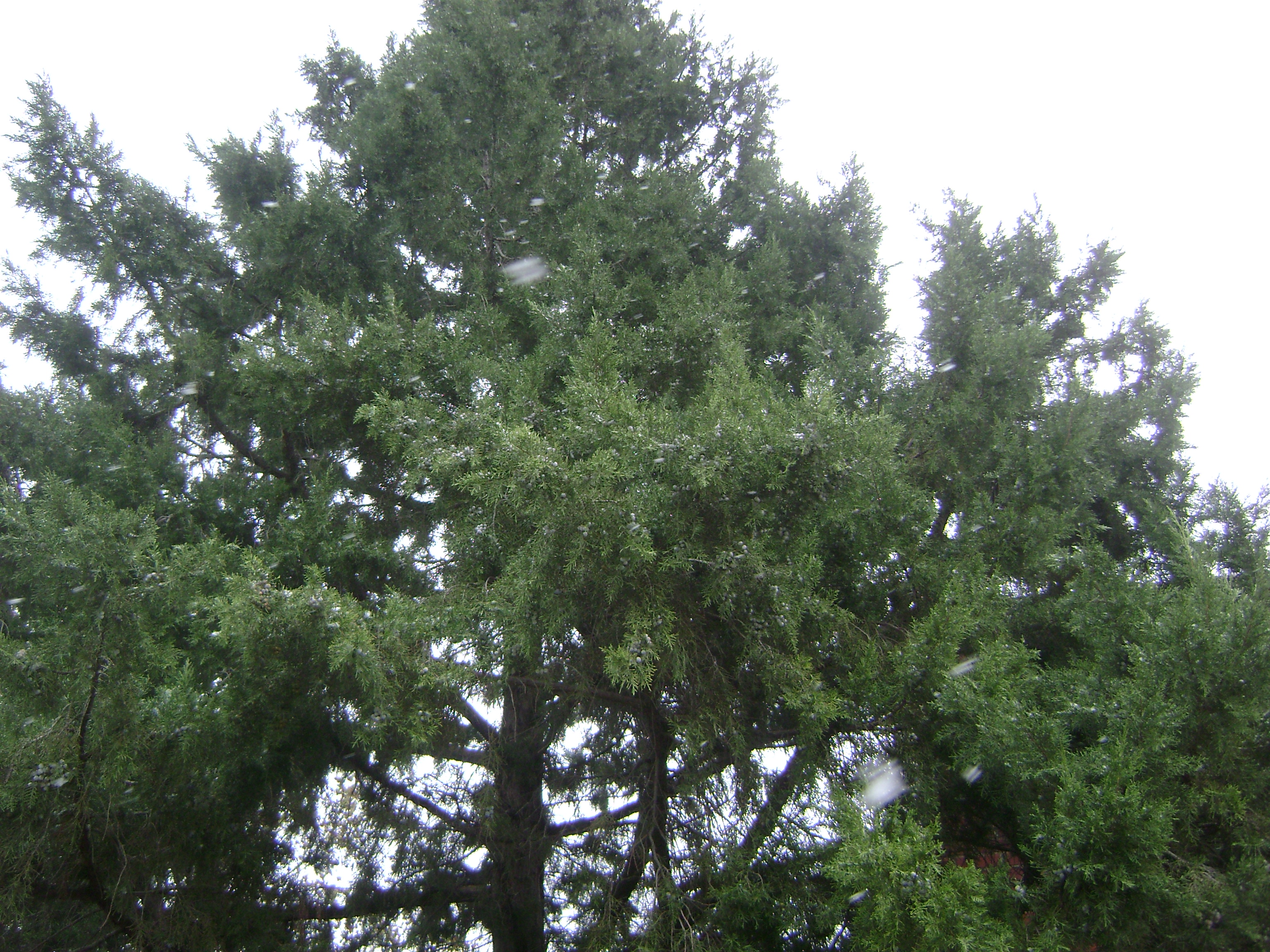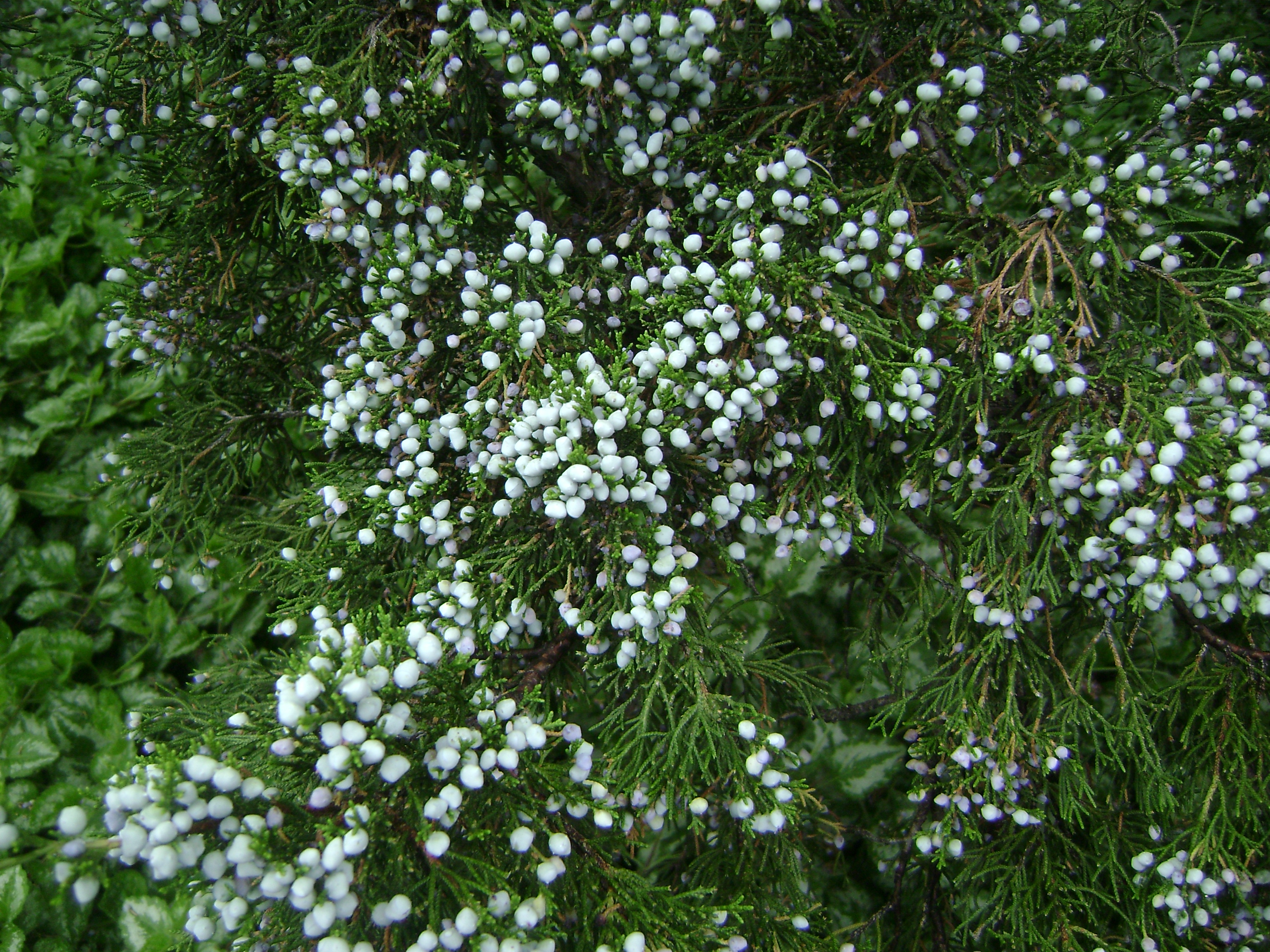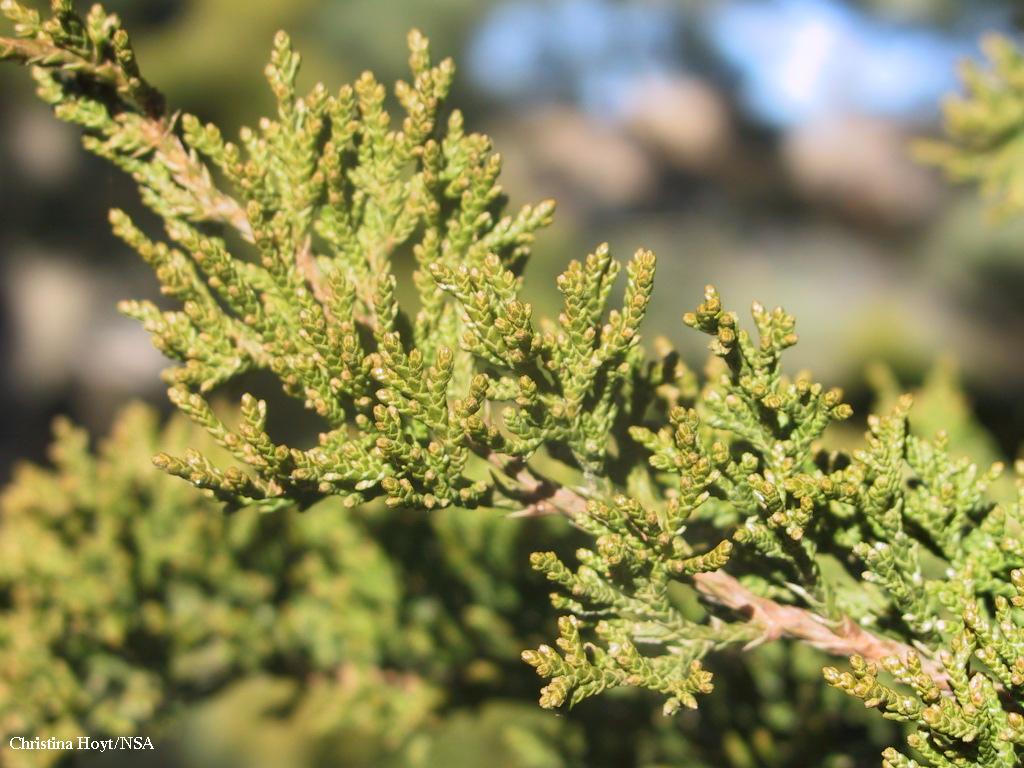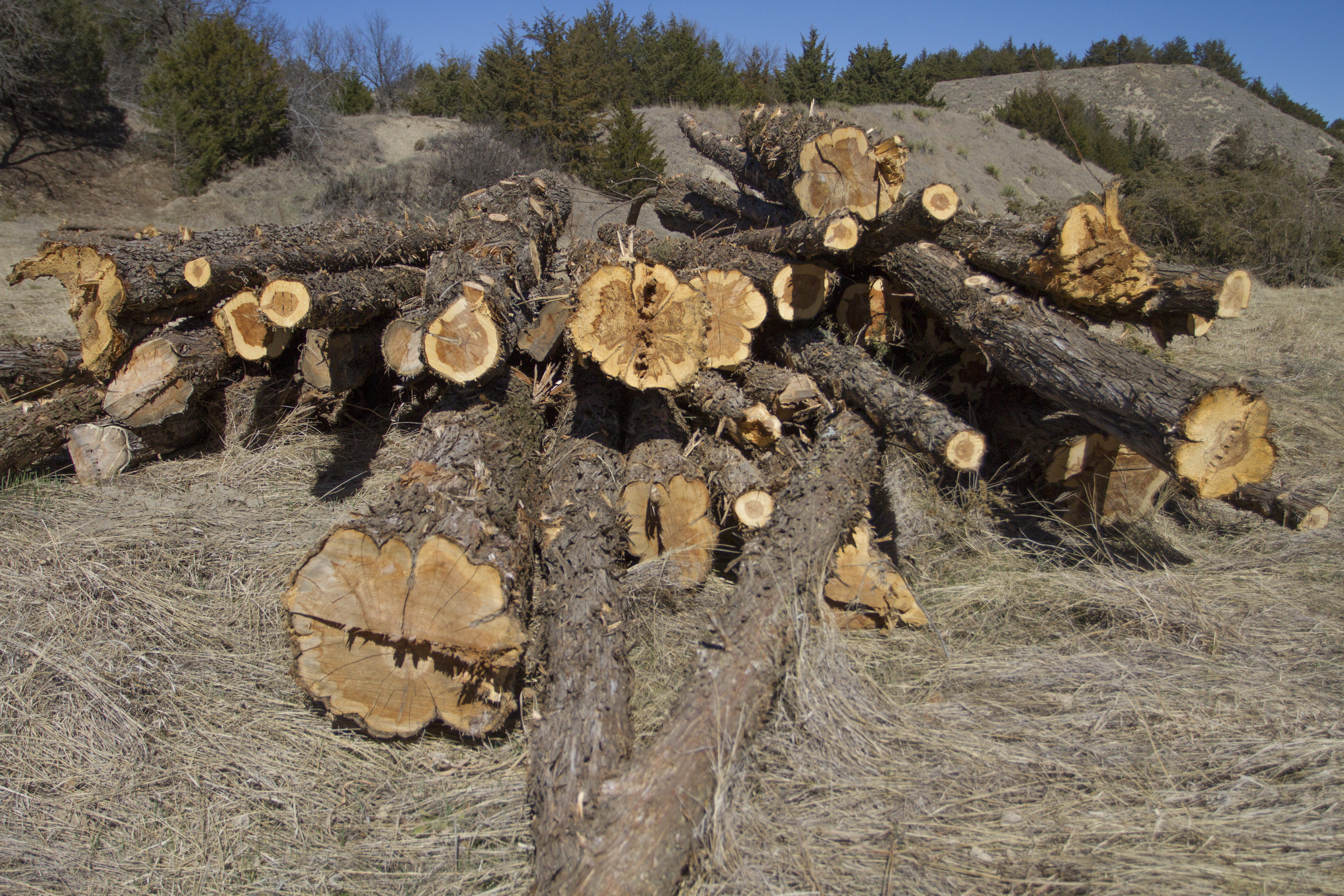Redcedar, Eastern
Juniperus virginiana, Coniferous
Eastern redcedar is a native tree that has long been used in windbreaks, shelterbelts, and conservation plantings across the Great Plains. Due to lack of management and naturally-occurring wildfires, it has rapidly spread into grasslands and riparian forests. Redcedar should be used with caution and planted only where needed for quick sheltering or where little else will grow. Management plans/practices should be in place prior to planting.

Where To Grow

Size at Maturity
| Tree Height | Tree Spread |
| 30-60' | 25-35' |
Tree Characteristics
Redcedar can take on many forms but it is typically pyramidal tree becoming rounder in age. Fruits pale-blue with whitish bloom, fleshy ‘berries’ (cones), 1/4 inch diameter, ripening the first season with 1 to 2 seeds in each cone; flowers small, cone-like on end of short twigs, male and female borne on separate plants. Green to gray-green scale-like leaves are awl-shaped and sharp-pointed and often take on a bronze color in winter. The reddish-brown bark becomes shreddy with age.
Wildlife Benefits
Red cedar and other junipers are important to wildlife throughout the country. Winter food and protection is particularly important for pheasant, mule deer, and whitetail deer. Their twigs and foliage are eaten extensively by hoofed browsers, but the chief attraction to wildlife is the bluish-black berry-like fruit. The cedar waxwing is one of the principal users of red cedar berries, but numerous other birds and mammals, both large and small, make these fruits an important part of their diet. In addition to their wildlife food value, cedars provide important protective and nesting cover. Chipping sparrows, robins, song sparrows, and mockingbirds use these trees as one of their favorite nesting sites. Juncos, myrtle warblers, sparrows of various kinds, and other birds use the dense foliage as roosting cover. In winter, their dense protective shelter is especially valuable.
Utilization
Some redcedar is harvested for saw logs and fence posts. Shavings can be used for livestock and pet bedding. Studies are underway analyzing redcedar biochar as a soil amendment (improving profile and water capture, retention) and a feed additive for cattle (reducing methane emissions).
Additional Considerations
Changes in land management over several decades allowed eastern redcedar to escape its typical habitat and move rapidly into grasslands and riparian forests. The tree still possesses benefits for multi-row or single-row windbreak plantings. However, landowners must plan to actively manage new seedling growth on their property for the life of the planting.
Interesting Facts
For numerous Native American Tribes, the red cedar tree symbolizes the tree of life and is burned in sweat lodges and in purification rites. The distilled oil of the red cedar has been officially listed as a reagent in the U.S Pharmacopoeia since 1916.
References
- Conservation Roundtable Position on Eastern Redcedar
- NRCS Plant Guide
- Tips for planting success
- Developed by Justin Evertson, Kyle Martens, and Denise Wally


